There are several general approaches to insect pest management. When developing an overall pest management strategy it is helpful to consider all of the available options. Most specific insect control methods can be classified into the following major categories: cultural control, host resistance, physical control, mechanical control, biological control, and chemical control. Not all are appropriate or useful in the home garden.
Cultural Control
These methods involve modification of standard farming or gardening practices to avoid pests or to make the environment less favorable for them. There are several types of cultural controls; the following are a few examples of commonly used methods.
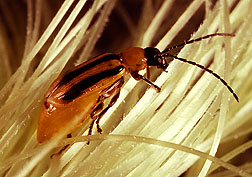
Crop rotation replaces a crop that is susceptible to a serious pest with another crop that is not susceptible, on a rotating basis. For example, corn rootworm larvae can be starved out by following corn with one to two years of a non-host crop such as soybeans, alfalfa, oats, or other crops. Crop rotation works best in larger areas where the insects can not readily move from the old crop location to the new, therefore, this technique has limited applicability to garden insect pests. Sanitation refers to keeping the area clean of plants or materials that may harbor pests. Examples include removal of weeds in greenhouses that may harbor mites, aphids, or whiteflies; destruction of crop residues such as corn stubble, squash vines, or fallen apples that may be overwintering sites for pests; cleaning of equipment that can spread pests from one area to another. Trap cropping is the provision of a pest insect’s preferred food near the crop to be protected; the insects are attracted to the trap crop which is then destroyed. For example, pickleworms will concentrate in squash planted near cucumbers, and the squash plants can be destroyed. A carefully considered time of planting will help avoid some pest problems such as seed corn maggot.
Host Resistance
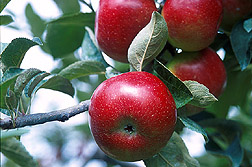
Host resistance, or plant resistance, has been used effectively for decades to reduce the impact of pests. Some plants have physical and chemical adaptations that allow them to repel, tolerate, or even kill pests. Plant breeders attempt to use these characteristics and even improve them to develop crops that are resistant. Many varieties of important crops grown today, such as wheat, rice, alfalfa, corn, and apples are resistant to one or more pests. Historically, the development of resistant varieties was often tedious and lengthy, requiring many generations of plant hybridization. Although such traditional techniques will continue, it is likely that modern methods of biotechnology will also provide pest-resistant crops.
Physical Controls
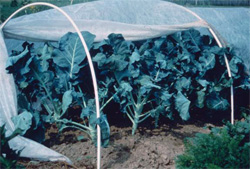
These are methods that physically keep insect pests from reaching their hosts. Barriers include window screens for keeping health and nuisance pests out of buildings and plant pests out of greenhouses, floating row covers for many horticultural crops, and plant collars to keep cutworms from attacking plants such as tomatoes. Various types of traps can be used for monitoring and/or control, such as glueboard traps in homes or red sphere traps for apple maggots. Codling moth larvae can be trapped under cardboard bands wrapped around apple trees; the bands are removed and destroyed. Some pests, such as earwigs and slugs, can be lured to their death in sunken traps filled with beer. In some cases, chemical lures (containing pheromones or other chemical attractants) are available to increase trap effectiveness. Trapping must be evaluated for each pest situation. In some cases, traps can lead to increased damage, such as pheromone-baited traps for Japanese beetles.
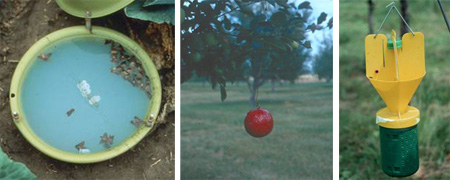
Mechanical Control
Mechanical control methods directly remove or kill pests. They can be rapid and effective, and many are well suited for small acute pest problems, and are popular with gardeners and homeowners. Importantly, mechanical controls have relatively little impact on the beneficial natural enemies of pests and other non-target organisms, and are therefore well suited for use with biological control in an integrated pest management approach (see below).
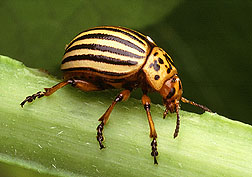
Hand-picking can be used for large or brightly colored foliage feeders such as Colorado potato beetle, Mexican bean beetle, and tomato hornworm. Some insects will defensively drop from plants if disturbed, and can be knocked into a container of soapy water. Shaking plants will dislodge many pests. For example, plum curculio beetles can be removed from fruit trees by diligently banging tree limbs with a padded stick and collecting the adult weevils on a white sheet as they fall out of the trees. A strong spray of water will dislodge aphids and mites from greenhouse, garden, and house plants. Fly swatters and mouse traps are forms of mechanical control. Cultivation or tillage exposes many soil insects to desiccation or predation by birds.
Biological Control
This is the use of beneficial organisms to control pests. Many centuries ago, Chinese farmers observed that ants were helping to control insect pests in their citrus orchards by feeding on caterpillars, beetles, and leaf-feeding bugs. The farmers discovered that by collecting the papery nests of a specific type of ant from trees in the countryside and moving them into their orchards, they got better control of some pests. They also provided aerial bamboo runways among the citrus trees to help the ants move easily from tree to tree. These efforts to increase the numbers of ants in the orchard and to heighten their efficiency as predators is the first recorded occurrence of biological control of insects, which is the intentional manipulation of populations of living beneficial organisms, called natural enemies, in order to reduce the numbers of pests or amount of damage.
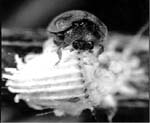
In the mid-1880s, southern California’s developing citrus industry experienced devastating losses from an introduced pest, cottony cushion scale. Growers tried every available chemical control known at the time, even fumigation with hydrogen cyanide, but nothing provided sufficient control; many growers removed their citrus groves because the damage was so serious. After determining that the scale insect was native to Australia and New Zealand, the U.S.D.A. sent an entomologist to that area to look for effective natural enemies. The entomologist found a small lady beetle, the vedalia beetle, which he sent to California. It rapidly reproduced in infested citrus groves and brought the cottony cushion scale under complete and lasting control. This was the first highly successful case of controlling an alien pest by introducing its natural enemies from a foreign land, a technique now known as classical biological control.
Agents of biological control (natural enemies) of insects include predators, parasitic insects, and insect pathogens. Predators may be insects or other insectivorous animals, each of which consumes many insect prey during its lifetime. Predators are often large, active, and/or conspicuous in their behavior, and are therefore more readily recognized than are parasites and pathogens.
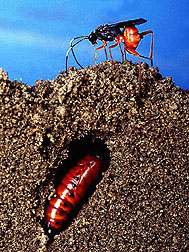
Parasites (also called parasitoids) of insects are other insects which lay their eggs in or on the host insect. When the parasite egg hatches, the young parasite larva feeds on the host (the pest) and kills it. Usually that one host is sufficient to feed the immature parasite until it becomes an adult. Many parasites are very specific to the type of host insect they can attack, and they are not harmful to humans. Although insect parasites are very common, they are not well known because of their small size. One of the smallest, Trichogramma, is only about the size of the period at the end of this sentence.
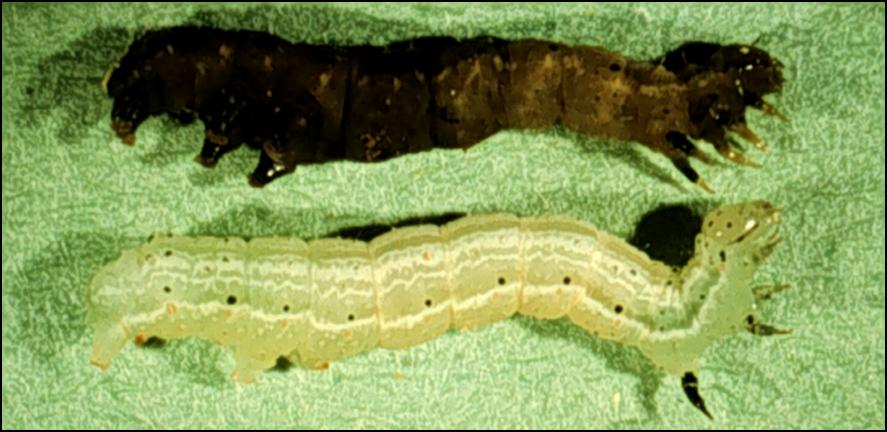
Insects, like other animals, are subject to attack by disease organisms. Microbial control is a form of biological control that uses insect pathogens to control pests. Insect pathogens include viruses, bacteria, fungi, nematodes, and other microorganisms that cause insect diseases. Disease epidemics among insects are not commonly encountered in nature except when insect populations are very large or when environmental conditions favor the growth of the disease organism. Nevertheless, insect pathogens are very important in the constant suppression of pest populations. Also, certain insect pathogens have been very successfully manipulated to achieve biological control of specific pests. For example, different strains of the bacterium Bacillus thuringiensis, commonly known as “Bt”, are marketed to control many insects including various caterpillars such as cabbage loopers and spongy moth larvae, mosquitoes, and Colorado potato beetles. Many insect pathogens attack only one species or a limited group of insects and therefore are unlikely to harm non-target species such as beneficial insects, humans, livestock, wildlife, or plants.
There are three broad approaches to biological control. Importation of natural enemies is conducted by federal and state agencies to find better beneficial natural enemies and permanently establish them into new areas. Conservation of natural enemies improves the effectiveness of natural enemies through farming and gardening practices that provide necessary resources for their survival and protect them from toxins and other adverse conditions. Augmentation of natural enemies temporarily increases the numbers of natural enemies through periodic releases, thereby increasing the overall numbers of natural enemies and improving biological control.
Chemical Control
This involves the use of chemicals to kill pests or to inhibit their feeding, mating, or other essential behaviors. The chemicals used in chemical control can be natural products, synthesized mimics of natural products, or completely synthetic materials.
Repellants, confusants, and irritants are not usually toxic to insects, but interfere with their normal behavior and thereby keep the insects from causing damage. Mothballs and mosquito repellants are familiar examples. Widescale use of synthetic sex pheromones may confuse insects sufficiently that they are unable to mate and produce offspring – using insect pheromones in this manner is called mating disruption. This is one method the Wi-DATCP has used to slow the spread of gypsy moth in Wisconsin, dropping pheromone flakes from airplanes in order to treat large acreages. A few such products are commercially available for other insects, such as for codling moth control in apples. This practice works best in large commercial plantings where it is less likely that mated females will move into the planting from outside of the treated area. Many of these types of behavioral chemicals break down or wash away quickly, and must be reapplied frequently, used in an enclosed area, or formulated to release slowly over a long period.
Insecticides and miticides include many types of commercially available toxins, some naturally-derived, others synthesized, that are used for killing insects and mites.
Chemical controls, particularly synthetic organic insecticides, have been developed for nearly every insect pest. They are widely used in industrialized nations for several reasons: they are highly effective – one product often controls several different pests; there is relatively low cost for product or labor; and generally their effects are predictable and reliable. Chemical insecticides have allowed management of larger acreages by fewer individuals because of the reduced labor needed for physical and mechanical controls. Besides their use in agriculture, chemical insecticides have been very important in the battle against disease-carrying insects, such as mosquitoes that carry malaria.
However, chemical controls have many disadvantages: most have biological activity against many forms of life and therefore can affect non-target organisms; for the same reason, they present various levels of hazard to humans, especially pesticide applicators and other farm workers; most are highly toxic to beneficial insects, such as pollinators and predatory and parasitic natural enemies; both target and non-target insects can develop resistance to insecticides, sometimes very rapidly. Over-reliance on chemicals and diminished use of other control methods have helped push agriculture away from a more natural, balanced state.
Integrated Pest Management
IPM is the blending of all effective, economical, and environmentally-sound pest control methods into a single but flexible approach to managing pests. Those who practice IPM realize that it is neither possible nor economically feasible to eliminate all pests; instead pest populations should be managed below economically damaging levels. Users of the IPM approach recognize and understand the importance of the controls provided by nature. When human intervention is necessary, the least invasive practices, such as plant resistance, biological control, and cultural control, should be used because these are the practices that fit best into sustainable agriculture. Highly disruptive or environmentally damaging practices should be used only as a last resort. Chemical pesticides should be used only when necessary, based upon frequent and routine monitoring of pest populations. Natural enemy populations should also be monitored so that their impact on pests can be determined. When pesticides are necessary, if possible, only those products should be used that are not detrimental to natural enemies.
Integrated pest management is a dynamic and evolving practice. Specific management strategies will vary from crop to crop, location to location, and year to year, based upon changes in pest populations and their natural controls. As specific new approaches are developed, these too can be incorporated into the program as appropriate. Modern pest managers will be most effective if they are knowledgeable about their pests, beneficial insects, and all of the control options available.
From “Biological Control of Insects and Mites – An introduction to beneficial natural enemies and their use in pest management” by Mahr, Whitaker, and Ridgeway, (c) 2008 UW-Madison Division of Extension.
– Dan Mahr, University of Wisconsin – Madison
Reviewed by PJ LieschFebruary, 2025
Educational Handout on Integrated Pest Management
Click the button below for a simple educational tool to help others approach pest management in the garden.






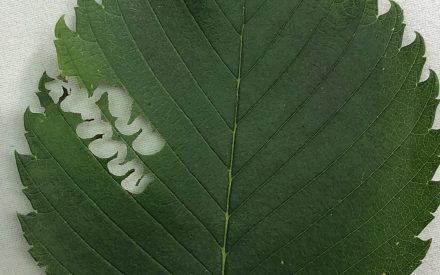 Elm Zigzag Sawfly
Elm Zigzag Sawfly ▶ Watch: How do Pesticides Affect Pollinators and Songbirds in Your Yard
▶ Watch: How do Pesticides Affect Pollinators and Songbirds in Your Yard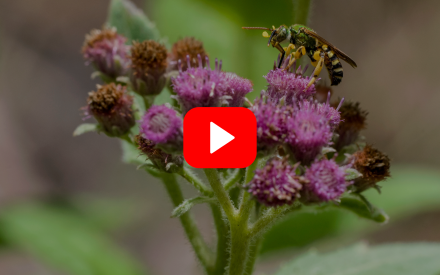 ▶ Watch: Pollinator Gardens: Plant Selection and Garden Care
▶ Watch: Pollinator Gardens: Plant Selection and Garden Care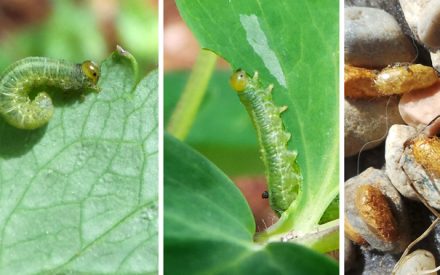 Strategies for Identifying and Managing Insect Pests
Strategies for Identifying and Managing Insect Pests


